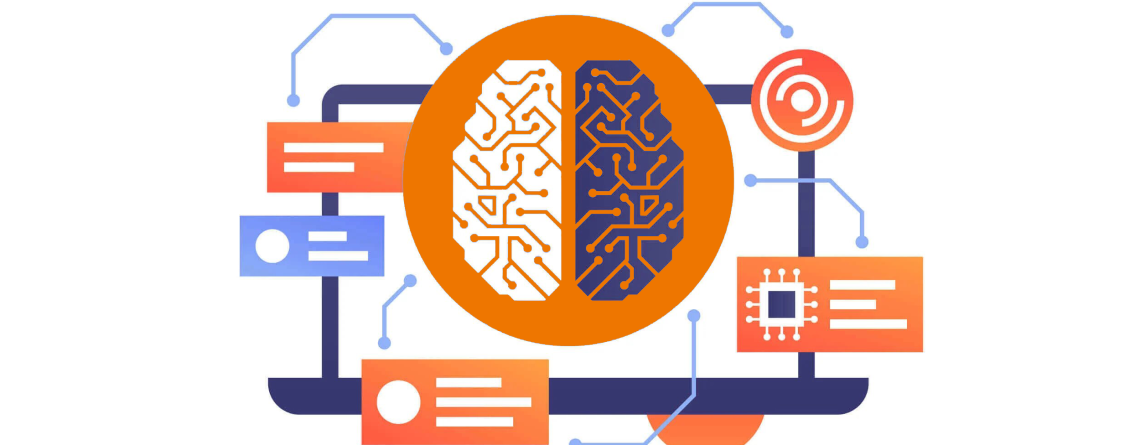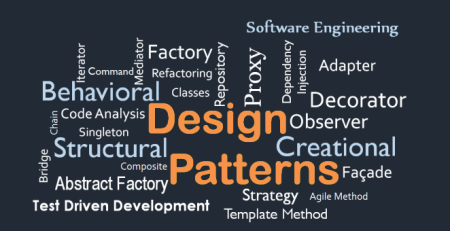Machine Learning Algorithms Explained
Many companies’ business processes have undergone significant changes as a result of machine learning. And we’re not just talking about futuristic products like Siri and Amazon Echo, or companies like Google and Microsoft that invest heavily in R&D programs. In reality, almost any Fortune 500 company benefits from machine learning by making more money and working more efficiently.
What is Machine Learning (ML)?
Machine Learning (ML) is a data analysis technique that allows an analytic system to learn by solving a large number of similar problems. Machine learning is based on the idea that analytical systems can learn to recognize patterns and make decisions with little human intervention.
Assume there is a program that can forecast the weather based on the previous week’s weather as well as thermometer, barometer, and anemometer readings. They would have written an algorithm with numerous conditional (if) constructs to accomplish this ten years ago:
- If a strong wind is blowing, it will probably catch clouds.
- If there are clouds, it will be cloudy.
- If the temperature has dropped but is above zero, it will rain; if it is below zero, it will snow.
The programmer had to describe an incredible number of conditions in order for the code to predict weather changes. Even though a multivariate analysis of the data was used, all of the regularities were specified manually. Even if such a program was referred to as artificial intelligence, it was merely an imitation.
Machine learning, on the other hand, enables the program to construct cause-and-effect relationships on its own. The AI is given a task and is taught how to complete it. The computer can examine indicators for months or even years to determine what factors influenced weather changes.
Another great example from Google’s DeepMind:
DeepMind, a division of Google, taught a model to walk. The program gathered data from virtual receptors and attempted to move the animated avatar from point A to point B. There were no guidelines for this. The program learned an algorithm that the developers created. As a result, it completed the task on its own.
The AI, like a child, tried various methods to find the one that would produce the best results. It also considered the physical models of the avatars, causing the four-legged one to jump and the humanoid one to run. The AI could also balance on moving slabs, navigate around obstacles, and go off-road.
What is Machine Learning Used for?
Walking was described in the preceding example. It will aid humanity in the development of trainable robots that can adapt to the tasks at hand. For instance, putting out fires, clearing debris, mining, and so on. In these cases, machine learning outperforms traditional programming. When writing code, a human can make mistakes. And this could send the robot into a trance because it doesn’t know how to interact with a rock whose shape the developer didn’t specify.
In data science, machine learning is widely used. And, for the most part, those tasks involve marketing.
Amazon employs AI and machine learning to recommend products that users are most likely to purchase. To that end, the program analyses previous users’ experiences and applies them to new users. However, the system has some drawbacks; for example, after purchasing a hat, the user will receive offers to purchase more. Since only one hat was required, the program will conclude that a few hundred more won’t hurt.
Google employs a similar system to select relevant ads, and it suffers from the same issue. Simply searching for information about different types of bikes will cause Google to determine that the user wishes to delve deeply into this subject.
You could also use voice assistants such as Siri. They employ ML-based speech recognition systems. They could eventually replace secretaries and call center operators.
ML applications can range from simple to complex. It may even aid in the development of quantum-resistant blockchain in the future. You can also use it in your applications. However, you will need to purchase, set up, and maintain a machine learning infrastructure.
Machine Learning in the Factory
Reducing production downtime. Downtime can cost a factory millions of dollars due to breakdowns, malfunctions, or raw material shortages. They can be avoided with the help of machine learning. This is accomplished by collecting data from sensors on the equipment and then determining the metrics at which failures occur. In the future, this data can be used to forecast when and why downtime will occur, as well as how to avoid it.
For example, it is possible that the temperature in a store always rises before a machine fails. If the temperature rises, the system will notify the engineers, who will be able to prevent the problem in time.
Oil and gas equipment manufacturer GE Oil & Gas employs the Industrial Internet of Things and machine learning to reduce downtime in mining operations. The platform collects data on oil production status, schedules diagnostic checks, and assists in identifying malfunctions before they occur. The same platform has assisted Kuwait Oil Company in increasing gas production by 2-5%, as well as Malaysia’s Petronas oil company in reducing maintenance costs by 10%.
Putting together a production management system. It is possible to manage the entire production using sensors and machine learning, not just narrow tasks (such as preventing breakdowns).
- Reduce the percentage of rejected parts: analyze why rejects occur and how to avoid them.
- Optimize individual steps so they take less time.
- Use less material for production and thus reduce costs.
- Monitor the condition of equipment and record its efficiency and workload.
- Automate individual production steps.
Simatic, a microcontroller manufacturer, employs an IoT and machine-learning platform. It assists in the real-time collection and analysis of data from sensors on equipment. It has aided in the automation of thousands of products by 75%, the increase of production by 9 times with the same floor space and personnel, and the reduction of waste by nearly 100%.
Detecting Security Risks Machine learning contributes to safer production by detecting minor changes in equipment performance and warning of potential disasters in real time.
Shell, for example, uses machine learning, neural networks, and IoT to identify safety threats and automatically alert employees. This allows them to respond to a problem before it becomes a disaster. Shell, by the way, uses machine learning to optimize its production and mining operations.
New field exploration. One of the most serious issues confronting the oil, gas, and mining industries is the difficulty in discovering new fields. This process is aided by machine learning. Using data from previous fields, artificial intelligence creates models that accurately predict where to look for new gas or deposits.
Machine Learning in Finance
Creditworthiness evaluation. Managers typically assess a client’s creditworthiness in banks. Employees devote a significant amount of time to evaluation and frequently make mistakes. They refuse loans to those who can pay and give loans to those who can’t.
The algorithm can be trained to assess bank customers’ creditworthiness. It is pre-loaded with information about previously issued loans, such as whether or not they were paid, whether there were delinquencies or early repayment. All of this helps the bank automate loan issuance.
Citibank has developed a reliable creditworthiness assessment system. The system is especially refined to detect fraudulent credit card transactions when shopping on the Internet.
Combating fraud. Fraudulent transactions cost banks and their customers money on a regular basis. Machine learning assists in identifying such transactions. Unique algorithms learn to detect and block fraudulent transactions in real time.
Machine learning can be used to detect fraudulent account attempts, identify a customer’s identity in the absence of a passport, identify fraudsters from ATM cameras, and assess customers’ creditworthiness. Many banks have used machine learning to detect and prevent fraud. Danske Bank, for example, has reduced the percentage of false fraud allegations by 60%.
Examples of Machine Learning in Medicine
Enhancing customer service. The shorter the queues are, the more convenient it is for doctors to work, and the more loyal the patients are, the faster the process of registering for an appointment in the clinic is. For example, StuDocu employs machine learning to provide students with the most relevant documents.
A facial recognition system was installed in the Invitro clinic network. When a patient approaches the counter, the administrator checks the computer for the appropriate card and refers the patient to the appropriate office. This reduces queues during peak hours, simplifies receptionists’ work, and allows them to serve more patients.
Disease detection. Loading examination and diagnostic data into the program allows it to be taught to diagnose in the same way that doctors do.
Corti’s artificial intelligence, for example, listens to ambulance calls and detects cardiac arrest based on callers’ responses, voices, and breathing. 93.1% of cardiac arrests were recognized by the program in one experiment. Humans recognize 72.9% of the time. Corti also works more quickly. It diagnoses in 48 seconds, whereas humans take 79 seconds.
The system is now being implemented in a number of European cities. It will collaborate with dispatchers in emergency services. The AI can be heard speaking to the person who called the ambulance in the video.
Robotic surgery that is automated. Machine learning teaches medical robots how to operate on patients on their own, taking into account a variety of factors.
The robot watched 78 surgical movies at the University of California to learn how to stitch. The robot was able to sew fake wounds with an accuracy of about 85% thanks to this training. This is still insufficient for real-world work. Such robots may be used to automate some operations in the future. The video depicts the robot’s learning process.
Application of Machine Learning in Retail and Marketing
Predicting consumer behavior, personalized offers, and advertising In the following ways, a trained algorithm can predict customer behavior:
- Determining who will make a purchase soon.
- Understanding who prefers what products and recommending them.
- Offering personalized discounts to encourage purchases.
The Rive Gauche cosmetics store chain, for example, uses machine learning to send personalized offers to customers. The program predicts which customers are likely to buy in the next two weeks, what products to offer them, and what to discount. Customers who used the system had a 42% higher average check and 47% more repeat purchases.
Purchase automation and demand forecasting Machine learning analyses customer actions and inventory balances to determine what, when, and how much to buy.
Morrisons, a British supermarket chain, uses machine learning to predict which items will be purchased and when. Many factors, such as holidays and weather, are considered by the system. As a result, the supply chain was able to close 30% of the supply gaps.
Machine Learning in Logistics
Saving fuel and improving transportation productivity Fuel is one of the most expensive items in logistics. It is possible to reduce its consumption with the help of machine learning: optimize routes or understand how to reduce the number of vehicles while maintaining productivity.
To save resources, Caterpillar’s marine division has implemented machine learning. Sensors were installed on the ships’ equipment by the company. It discovered that using more generators with lower capacities is more efficient than maximizing the use of multiple generators. In just one year, this solution saved more than $650,000.
Keeping supply disruptions at bay. A single vehicle delay disrupts the entire supply chain, causing downtime, money loss, and customer dissatisfaction. Machine learning assists you in avoiding this by anticipating risks, preventing them in advance, and adjusting delivery times to account for all factors.
DHL employs artificial intelligence with Supply Watch. It actively monitors a variety of risks (weather, environmental factors, traffic congestion, and even crime rates) in order to notify customers of potential delivery delays.
Problems of Machine Learning
Working with self-learning algorithms is a difficult task. Ordinary television shows are predictable. We can investigate them and learn how they work. The situation is more complicated with self-learning algorithms because of the following issues:
- Companies often encounter complex machine learning problems that are difficult to break down into simple sub-problems. They jump from one experiment to another while trying to solve such complex use-cases. This makes it difficult to speed up the development of AI.
- To effectively train neural networks and complex algorithms requires enormous amounts of data and technical resources: servers, special rooms for them, high-speed Internet without failures, and a lot of electricity. It takes years and millions of dollars to get the data you need. Only a large IT corporation can afford such costs. There are not many open data sets, some you can buy, but they are very expensive.
- As the capacity to collect and process datasets grow, so do the harmful emissions produced by the most significant data centers.
- Not only does the data need to be collected, but it also needs to be marked up so that the machine knows exactly where the object is and what its attributes are. This applies to numerical data, texts, and images. Again, you need millions of dollars in investments to do this manually.
- Even if there is a lot of data and it is regularly updated, it may turn out that the algorithm does not work in the process of training. The problem can be both in the data and in the approach itself: when a machine has successfully solved a problem with some data but is not able to scale the solution with new conditions.
- Despite all the breakthroughs in deep learning of neural networks, AI is not yet able to create something entirely new, to go beyond the proposed conditions and surpass its inherent abilities. In other words, it is not yet able to outperform humans. But they can perform tasks better than unskilled people. For example, a robot will sew up a human wound better than an unskilled person. But a qualified surgeon will still do a better job.
Despite these issues, we will soon be able to significantly expand our capabilities with AI, transferring routine and costly operations to it, communicating and controlling machinery via neuro-interfaces.
Сonclusion
The machine learning principle enables the creation of computers and programs that mimic human thought. However, unlike humans, they do not tire, make fewer mistakes, can work with any amount of data, and evaluate it objectively. This opens up a plethora of opportunities for artificial intelligence.
Machine learning contributes to the rapid development of technologies. We will be able to solve tasks that are beyond the control of the human mind with it. And examples of today’s ML applications demonstrate this.
You can create a wide range of services and programs using machine learning. From the most basic tools we use every day – navigators, facial recognition cameras, and recommendation services – to the most complex tools we require in industry or security. Our IT team has extensive experience with machine learning and AI development. Please do not hesitate to contact us the Nile Bits team will be happy to assist you!












Leave a Reply